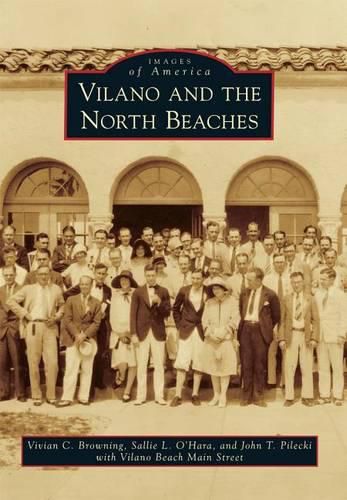Readings Newsletter
Become a Readings Member to make your shopping experience even easier.
Sign in or sign up for free!
You’re not far away from qualifying for FREE standard shipping within Australia
You’ve qualified for FREE standard shipping within Australia
The cart is loading…






Vilano and the North Beaches are perhaps most known as small, eclectic beach communities within sight of St. Augustine, the nation’s oldest city. For centuries, people have flocked to this coastal playground by horse-drawn trolley, ferry, and more recently Florida’s Coastal Highway, State Road A1A. They came for recreation, jobs, and sunny weather in the late 1800s, when Henry Flagler attracted Northerners to his new and novel hotels. Visitors were excited to learn the ocean was just across the bay. Tourism provided jobs for settlers, like the Minorcan, Usina, and Capo families, offering fun excursions. Nowhere else were horse-drawn trolleys delivering beachgoers across sand dunes to the sea. Like Ponce de Leon, who was smitten with the pristine beaches, the area’s story is one of developing the land along an isolated coastline. Road and bridge construction after World War II encouraged migration as well as visitors to the beaches, fish camps, and Art Deco motor courts. This nostalgic 1950s look remains today, attracting those curious about the region’s multicultural history.
$9.00 standard shipping within Australia
FREE standard shipping within Australia for orders over $100.00
Express & International shipping calculated at checkout
Vilano and the North Beaches are perhaps most known as small, eclectic beach communities within sight of St. Augustine, the nation’s oldest city. For centuries, people have flocked to this coastal playground by horse-drawn trolley, ferry, and more recently Florida’s Coastal Highway, State Road A1A. They came for recreation, jobs, and sunny weather in the late 1800s, when Henry Flagler attracted Northerners to his new and novel hotels. Visitors were excited to learn the ocean was just across the bay. Tourism provided jobs for settlers, like the Minorcan, Usina, and Capo families, offering fun excursions. Nowhere else were horse-drawn trolleys delivering beachgoers across sand dunes to the sea. Like Ponce de Leon, who was smitten with the pristine beaches, the area’s story is one of developing the land along an isolated coastline. Road and bridge construction after World War II encouraged migration as well as visitors to the beaches, fish camps, and Art Deco motor courts. This nostalgic 1950s look remains today, attracting those curious about the region’s multicultural history.